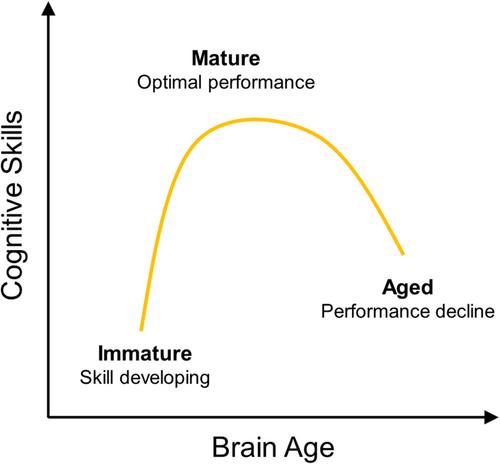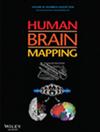Frontoparietal and salience network synchronizations during nonsymbolic magnitude processing predict brain age and mathematical performance in youth
Abstract
The development and refinement of functional brain circuits crucial to human cognition is a continuous process that spans from childhood to adulthood. Research increasingly focuses on mapping these evolving configurations, with the aim to identify markers for functional impairments and atypical development. Among human cognitive systems, nonsymbolic magnitude representations serve as a foundational building block for future success in mathematical learning and achievement for individuals. Using task-based frontoparietal (FPN) and salience network (SN) features during nonsymbolic magnitude processing alongside machine learning algorithms, we developed a framework to construct brain age prediction models for participants aged 7–30. Our study revealed differential developmental profiles in the synchronization within and between FPN and SN networks. Specifically, we observed a linear increase in FPN connectivity, concomitant with a decline in SN connectivity across the age span. A nonlinear U-shaped trajectory in the connectivity between the FPN and SN was discerned, revealing reduced FPN-SN synchronization among adolescents compared to both pediatric and adult cohorts. Leveraging the Gradient Boosting machine learning algorithm and nested fivefold stratified cross-validation with independent training datasets, we demonstrated that functional connectivity measures of the FPN and SN nodes predict chronological age, with a correlation coefficient of .727 and a mean absolute error of 2.944 between actual and predicted ages. Notably, connectivity within the FPN emerged as the most contributing feature for age prediction. Critically, a more matured brain age estimate is associated with better arithmetic performance. Our findings shed light on the intricate developmental changes occurring in the neural networks supporting magnitude representations. We emphasize brain age estimation as a potent tool for understanding cognitive development and its relationship to mathematical abilities across the critical developmental period of youth.
Practitioner Points
- This study investigated the prolonged changes in the brain's architecture across childhood, adolescence, and adulthood, with a focus on task-state frontoparietal and salience networks.
- Distinct developmental pathways were identified: frontoparietal synchronization strengthens consistently throughout development, while salience network connectivity diminishes with age. Furthermore, adolescents show a unique dip in connectivity between these networks.
- Leveraging advanced machine learning methods, we accurately predicted individuals' ages based on these brain circuits, with a more mature estimated brain age correlating with better math skills.


 求助内容:
求助内容: 应助结果提醒方式:
应助结果提醒方式:


